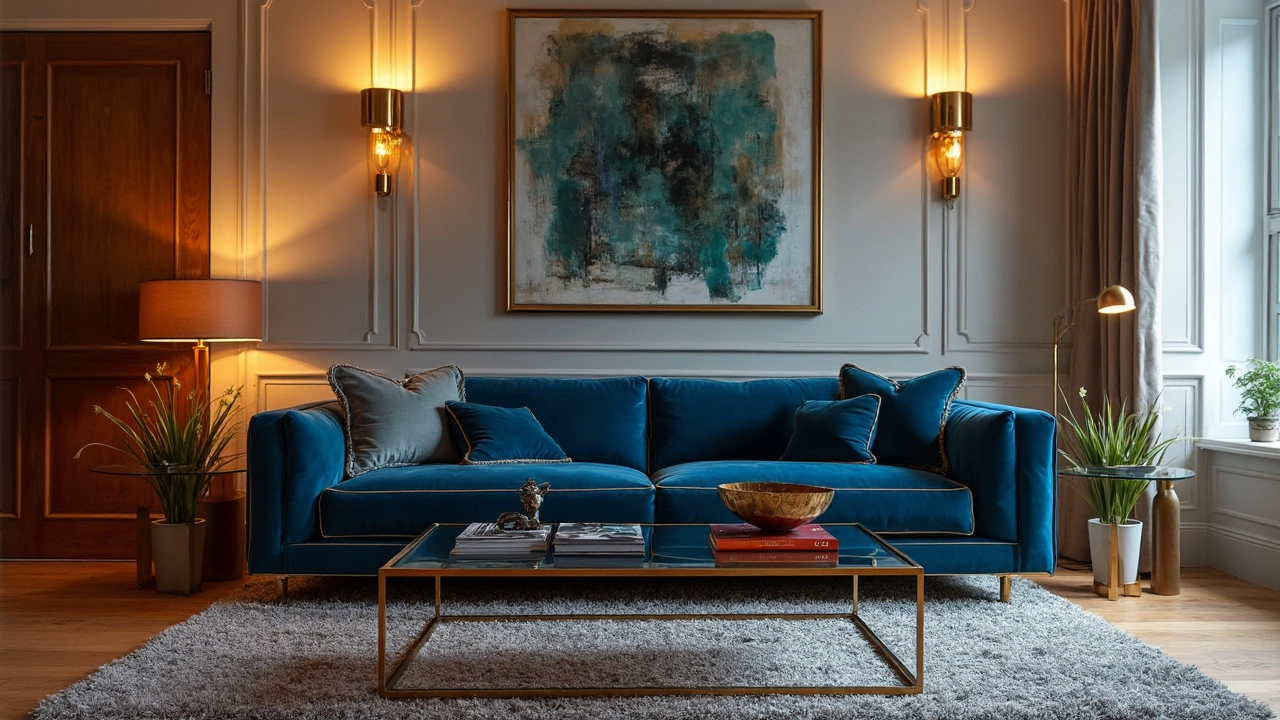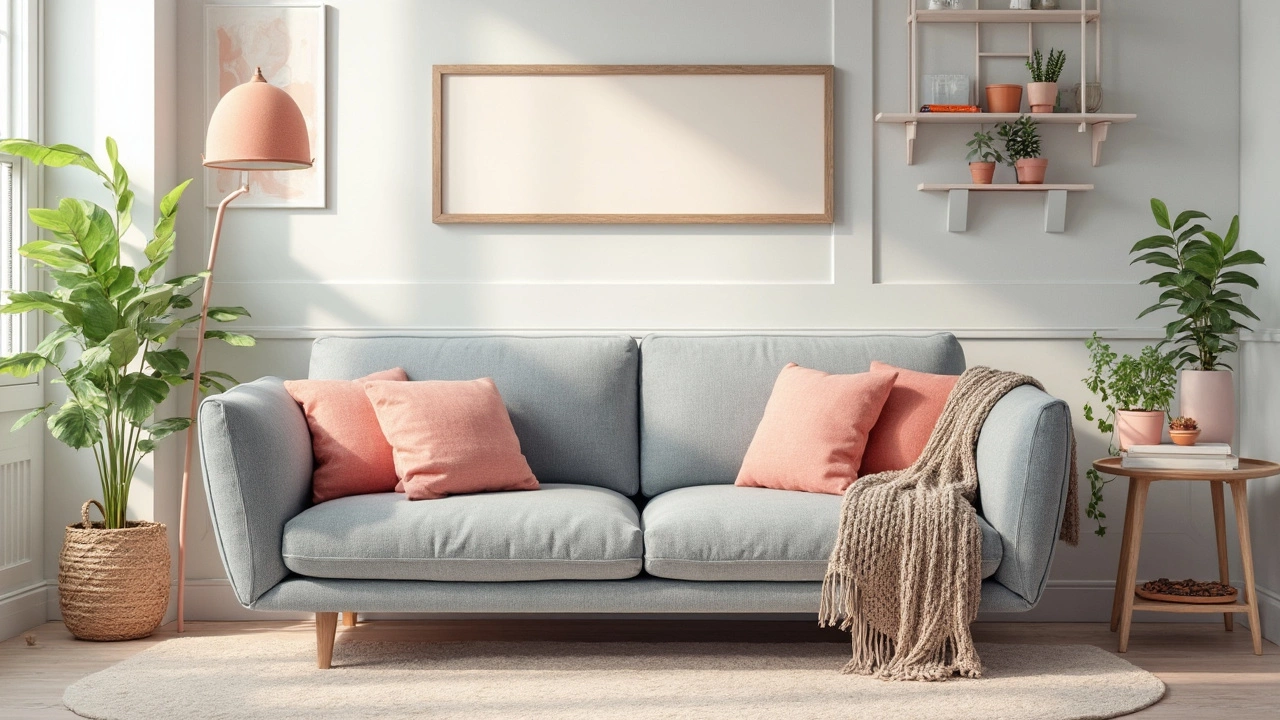Is $2000 Too Much for a Sofa? A Practical Guide
 Apr, 5 2025
Apr, 5 2025
So, you're eyeing that $2000 sofa and wondering, is it really worth the splurge? Let's break it down. It's not just a simple piece of furniture; it's where Netflix marathons, lazy afternoons, and even the occasional nap go down. Before you whip out your credit card, consider what you're really investing in.
One biggie is durability. Are you looking at hardwood frames or some flimsy build that's going to fall apart in a couple of years? Quality materials often mean a longer-lasting couch. Then there's the comfort level—does it feel like sitting on a cloud or more like a board?
Brand plays a role too. Sometimes, you're paying for a trusted name, but don’t get too caught up in logos. Many lesser-known brands offer the same quality without the price tag. So, what’s your take—flashy logo or hidden gem?
- What Makes a Sofa Worth $2000?
- Exploring Alternatives: When to Spend Less
- The Scoop on Sofa Durability and Materials
- Personalizing Your Sofa Choice
What Makes a Sofa Worth $2000?
Alright, so you're ready to drop $2000 on a sofa. That's a chunk of change, so it better be worth it, right? The first thing you're often paying for is quality. Imagine the difference between a piece that lasts two years versus ten. The secret sauce here is typically the frame material. Good ones are crafted from hardwoods like oak or maple, which can take a beating better than some cheaper alternatives.
Ever sat on a sofa that feels like a rock? That's where the cushion fill comes in. Higher-end sofas might use high-density foam mixed with a bit of down or feathers for that perfect balance between support and squishiness. So, when testing, do the 'sink' test—are you feeling supported yet comfy?
Another aspect is the upholstery material. Leather or high-quality fabric isn't just for the looks; they resist stains and are easier to maintain or clean. Think about your lifestyle. Got kids or a pet? Maybe go for tougher materials that can handle spills or scratchy paws.
And let's not forget style and customization. Some sofas at this price point allow customization in fabric color or leg style, making it truly yours. If you're spending big bucks, getting a design that speaks to you matters.
A glance at some pricing can be telling:
| Material | Price Range |
|---|---|
| Hardwood Frame | $500 - $2000+ |
| High-Density Foam Cushions | $300 - $1500 |
| Leather Upholstery | $1000 - $3000 |
Finally, don't underestimate the impact of brand reputation and warranty. Some companies have been around for decades, building a name on reliability. A decent warranty often indicates the brand stands behind their product; a good thing when you’re forking out this much cash.
So, is that $2000 sofa really worth it? If it ticks these boxes for you, then it just might be!
Exploring Alternatives: When to Spend Less
Okay, so maybe shelling out $2000 on a sofa isn't your jam. No worries, there are plenty of ways to find a comfy, stylish couch without burning through your savings. First things first—keep your eyes peeled for sales and clearances. Many furniture stores have sales during major holidays or at the end of the season when they're trying to make room for new stock.
You can also check out secondhand options. Apps and websites like Facebook Marketplace or Trade Me have some great finds if you're willing to do a little searching. Often, people are just looking to unload good quality stuff because they're moving or redecorating. Just make sure to give it a thorough inspection for any hidden damage.
Another option is to explore budget-friendly retailers like IKEA or your local furniture store, which often carry decent-quality sofas without the hefty tag. While these might not last forever, they can be a solid choice if you plan to replace your furniture every few years.
Don't forget to measure your space and bring those dimensions while shopping. You don't want to snag a great sofa at a killer price only to realize it won't fit through your front door!
If you're feeling a bit adventurous, you could even DIY a sofa. There are tons of online tutorials that show you how to build one from scratch or upcycle an old one. This approach not only saves money but also gives you the chance to create something truly unique.
Finally, consider what you truly need. Maybe you don't need something as flashy or big if you’re just looking for a spot to relax. Save those dollars for something else that might be more important down the line, like a sweet sound system or a fancy coffee machine. Because who says you can't have your couch and sip your latte too?

The Scoop on Sofa Durability and Materials
Alright, let's dig into what makes a sofa last. When you're shelling out $2000, you want it to stick around for a while, right? It's all about the materials and build.
The frame is your sofa's backbone. The gold standard here is kiln-dried hardwood like oak or maple, which can handle years of plopping down. It's way better than particleboard or plastic, which could break under pressure—literally.
Next up, let's chat comfort. High-density foam cushions are the go-to. They keep their shape over time, unlike cheaper foams that turn into pancakes. If you're into sinking into your seat, down-filled cushions feel nice and plush but might require more fluffing.
Fabric choices are crucial too. If your home hosts kids or pets, you might want something durable like microfiber that resists stains and wear. Leather is classic and can age like a fine wine, developing a unique patina over time if you care for it properly.
| Material | Durability | Common Use |
|---|---|---|
| High-density foam | 10+ years | Cushions |
| Leather | 15+ years | Upholstery |
| Microfiber | 10+ years | Upholstery |
Finally, don't overlook construction details like joints. Look for sofa frames with joints connected by screws or dowels rather than staples or glue.
So, what's more important to you: the plush feel you sink into after a day's work, or knowing you’ve got a sturdy build that won’t give out?
Personalizing Your Sofa Choice
Getting the right sofa isn't just about snatching the coolest style on Pinterest. It's about making it fit your lifestyle and space perfectly. Imagine living with a pet that thinks anything plush is a new scratching post. In that case, you'll want a sturdy fabric like microfiber that can handle a little rough love.
If you're a fan of hosting game nights or movie marathons, you'll want a sofa that can seat your crowd comfortably. Check out modular options that can be rearranged for different occasions. Versatility is key if you want your furniture to keep up with your social life.
Color and style also play big roles in personalization. Neutral colors are classic and keep things clean, giving you more freedom with accent cushions and throws. But if you're feeling bold, a pop of color or a unique pattern can transform your living room into a vibrant space that mirrors your personality.
Don't forget the small yet important details like the height of the armrest or the depth of the cushions. These might seem trivial but can seriously affect your comfort level, especially if you're a habitual lounger or napper.
Here's a fun tidbit: recently, a survey showed that people sit on their sofa for an average of 4 hours a day! So, tailoring this centerpiece to your needs isn’t overkill—it’s smart living. The right choice here means blending style, practicality, and a touch of fun to ensure it feels like yours, truly.